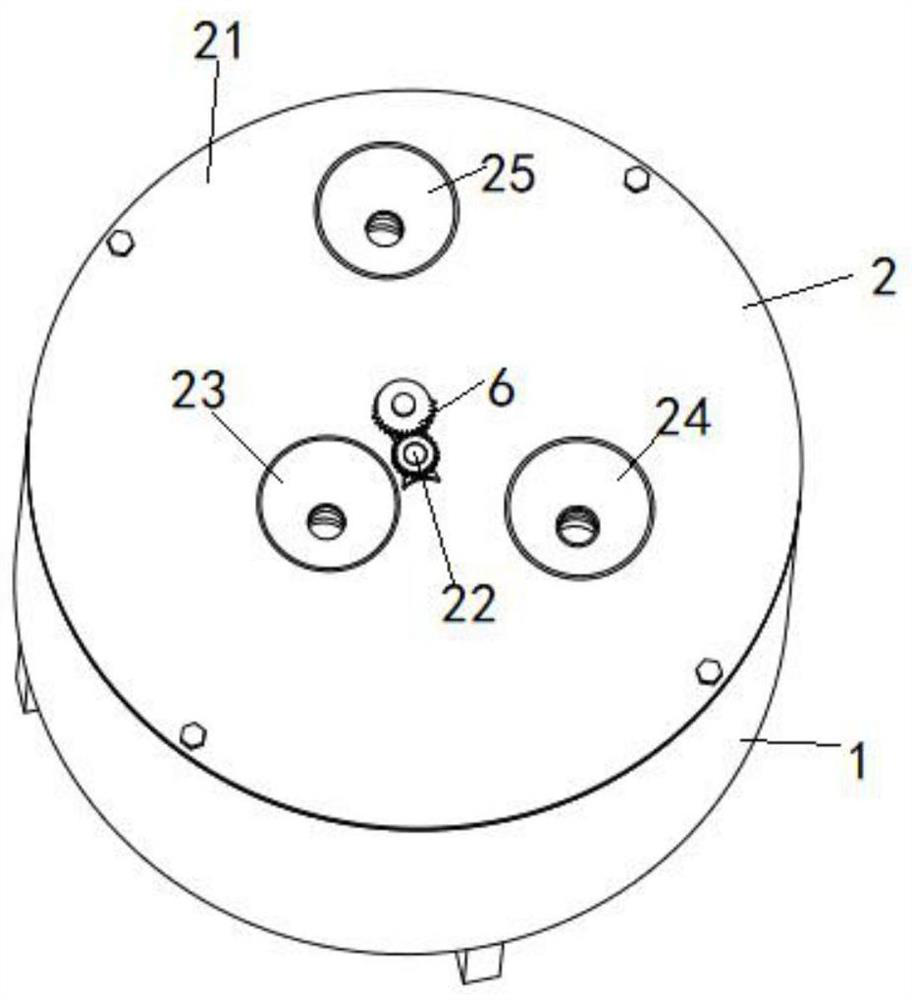Preparation process of a flame-retardant wear-resistant cable
A preparation process and flame-retardant technology, which is applied in the field of preparation process of flame-retardant wear-resistant cables, can solve the problems of poor toughness, affecting the performance of wear-resistant materials, and reducing the resistance of composite materials, so as to achieve high toughness and improve performance , the effect of high flame retardant performance
- Summary
- Abstract
- Description
- Claims
- Application Information
AI Technical Summary
Problems solved by technology
Method used
Image
Examples
Embodiment 1
[0045] The preparation process of branched aldehyde-based polyphenylene ether is as follows:
[0046] Step 1: Add 1mol p-bromobenzaldehyde, 2.2mol phenol and 400mL acetic acid to the reaction kettle at the same time, stir and dissolve, cool to 0°C, add 360mL concentrated sulfuric acid dropwise to it, control the dropwise addition within 2h, and then stir and react at constant temperature for 72h, The product was poured into ice water, stirred for 1 h, filtered, washed with water until neutral, and dried to obtain product A;
[0047] Step 2: 100g of product A, 70g of hexamethylenetetramine and 850mL of acetic acid solution with a mass concentration of 90% were added to the reactor simultaneously, and the temperature was raised to 50°C for stirring and dissolving for 30min, followed by heating to reflux after adding 70mL of water, After 8-9 hours of reaction, acetic acid was recovered under reduced pressure to dryness, then 200 mL of water was added, extracted with chloroform, a...
Embodiment 2
[0050] The preparation process of branched polyphenylene ether is as follows: add the product A prepared by 100g embodiment 1, 35g potassium carbonate, 1L toluene and 2.8L dimethyl sulfoxide in the reactor, continuously feed nitrogen into the reactor, stir After dissolving, heat to reflux for 2-3h, then add 430mg cuprous chloride to it, heat up to 170℃ for 30h, cool to room temperature and add hydrochloric acid to adjust the pH of the solution=3-3.5, then add the product to a mass concentration of 50 % methanol aqueous solution with stirring, filtration, washing and drying to obtain branched polyphenylene ether.
Embodiment 3
[0052] The preparation process of the aminoated elastomer modifier is as follows:
[0053] (1) Add 0.1 mol of diethanolamine and 11 mL of 37% formaldehyde solution to the reaction kettle at the same time, heat up to 45 °C for 2 h, then heat up to 90 °C and vacuum to remove the generated water, then cool down to 65 °C and slowly add it to the reaction kettle Add 0.094mol of diethyl phosphite, react at constant temperature for 3h, and then perform vacuum distillation to obtain dihydroxyphosphate. Infrared analysis shows that at 1246cm -1 The infrared absorption peak of P=O appeared at 3335cm -1 There is a broad infrared absorption peak of hydroxyl group;
[0054] (2) 0.1 mol of dihydroxyphosphate, 0.22 mol of allyl dimethyl chlorosilane and 70 mL of petroleum ether were added to the reactor at the same time, the temperature was raised to 90° C. for reflux reaction for 4 h, the petroleum ether was evaporated and then vacuum distilled to obtain a double-ended Alkenyl silylated p...
PUM
 Login to View More
Login to View More Abstract
Description
Claims
Application Information
 Login to View More
Login to View More - R&D
- Intellectual Property
- Life Sciences
- Materials
- Tech Scout
- Unparalleled Data Quality
- Higher Quality Content
- 60% Fewer Hallucinations
Browse by: Latest US Patents, China's latest patents, Technical Efficacy Thesaurus, Application Domain, Technology Topic, Popular Technical Reports.
© 2025 PatSnap. All rights reserved.Legal|Privacy policy|Modern Slavery Act Transparency Statement|Sitemap|About US| Contact US: help@patsnap.com



